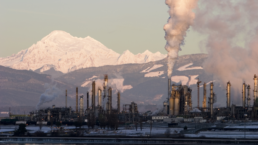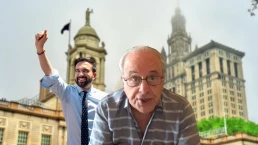Local communities want to electrify, but gas interests have other ideas.
by Nick Bowlin, High Country News
Gunnison, Colorado, at 7,700 feet above sea level, sees some of the coldest temperatures in the Lower 48. Its 6,000 or so inhabitants, especially low-income residents in older, poorly insulated housing, use more energy — often from natural gas — than their lowland counterparts.

Last year, Gunnison’s city government proposed cutting both greenhouse gas emissions and utility bills by making new homes more efficient and less reliant on fossil fuels.
But Gunnison soon encountered the same obstacle that other communities do when they try to move toward electric heat pumps, stoves and water heaters: natural gas providers.
By vigorously campaigning against electrification policies in what are normally local battles, national natural gas utilities have opened a new front in the decarbonization struggle: building codes.
Building codes can either accelerate local carbon emission reductions or lock in fossil fuel infrastructure, according to David Konisky, a professor at Indiana University who studies environmental and energy politics and policy. When code changes nibble at utilities’ market share, however, the corporations bite back.
“It’s not surprising that they will fight against these reforms,” Konisky said. “It’s cutting into their standard business model of people using natural gas for cooking or heating in their homes.”
Recent Posts
“Arrest Now, Ask Questions Later”: Why Did L.A. ICE Agents Arrest and Jail U.S. Citizen Andrea Velez?
July 3, 2025
Take Action Now “They didn’t have vests that said ICE or anything. Their cars didn’t have license plates. … Just because of the color of our…
Trump’s Big, Beautiful Bill Is Naked Class War
July 3, 2025
Take Action Now Trump’s “Big, Beautiful Bill” trades tax cuts on millionaires for the dissolution of society.By Hamilton Nolan, In These Times…
Mayor Mamdani’s First Day, A Zero Hour Conversation With Richard Wolff
July 2, 2025
Take Action Now If elected, what would Mayor Mamdani do on his first day in City Hall? How would a democratic socialist govern as a big-city mayor?……
The U.S. Is Funding A Bloodbath At Gaza Aid Centers
July 2, 2025
Take Action Now The admin just gave $30M to GHF, the organization at the center of charges that Israel is weaponizing assistance and shooting at…




